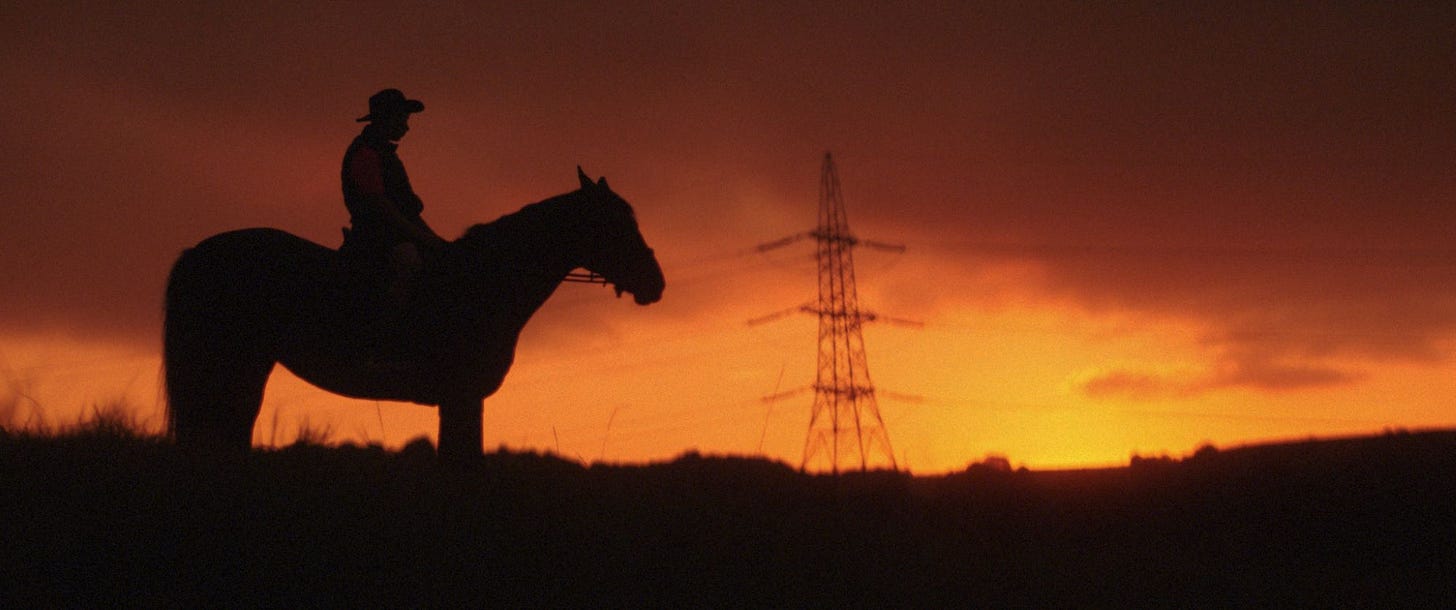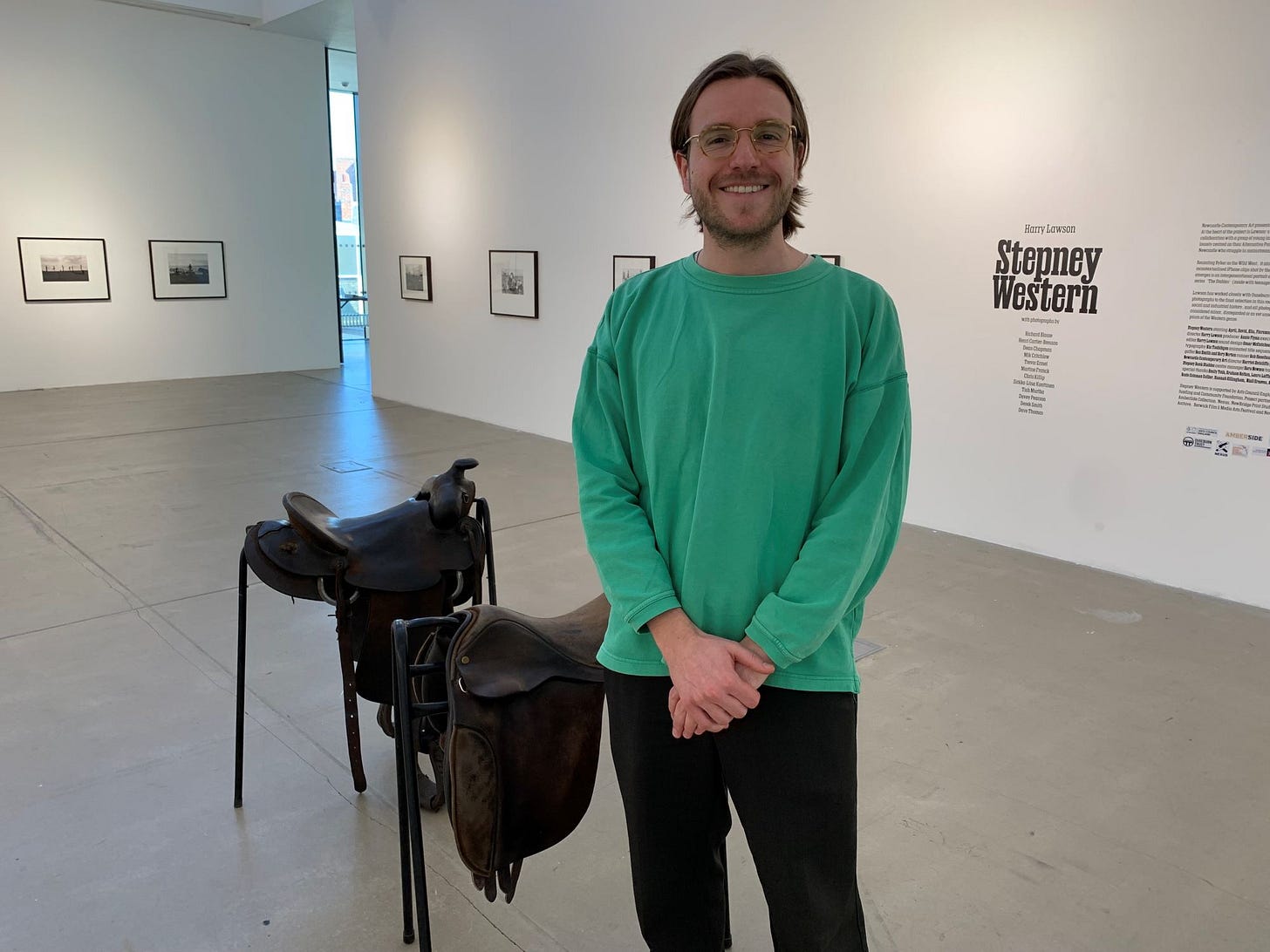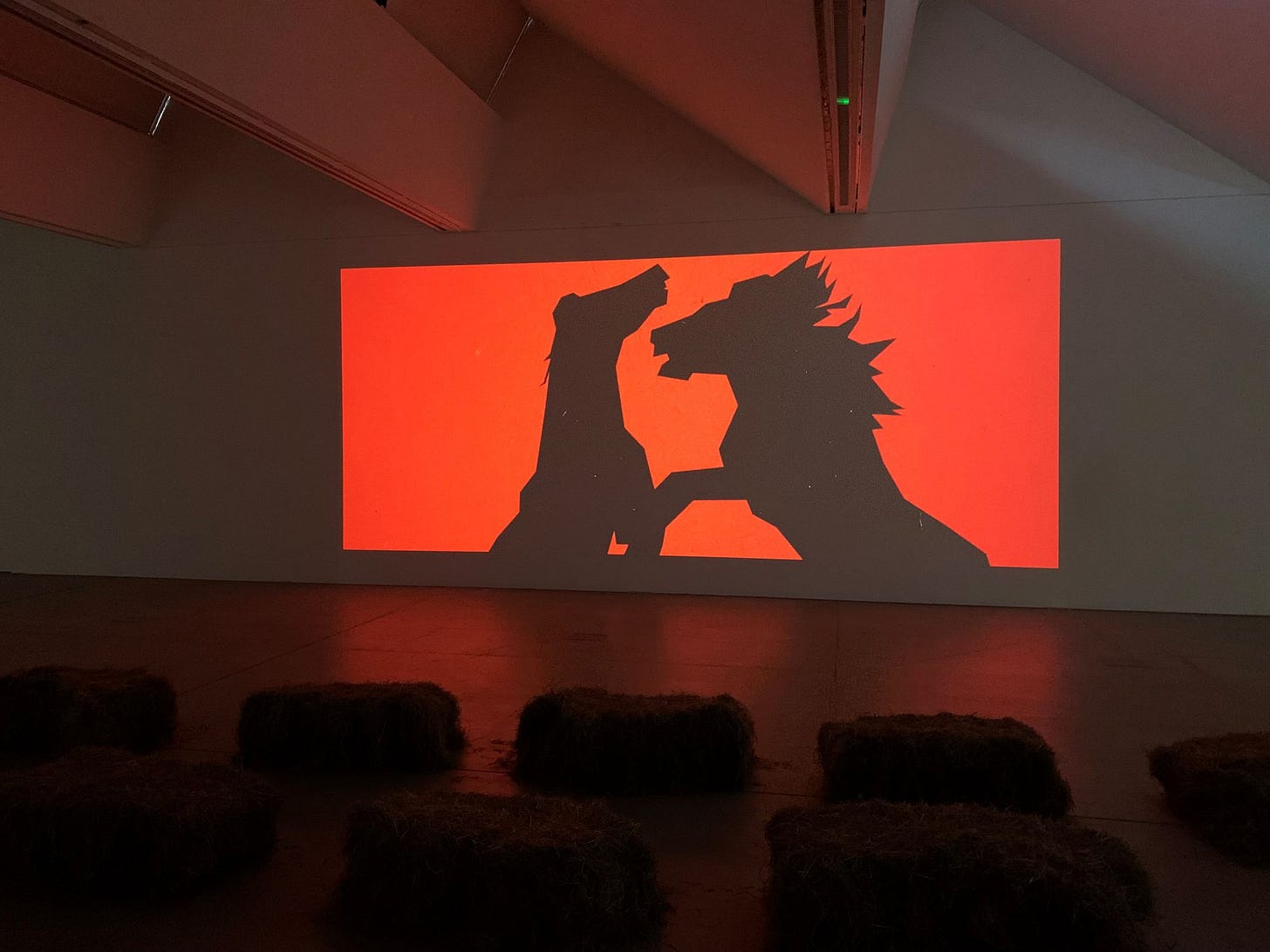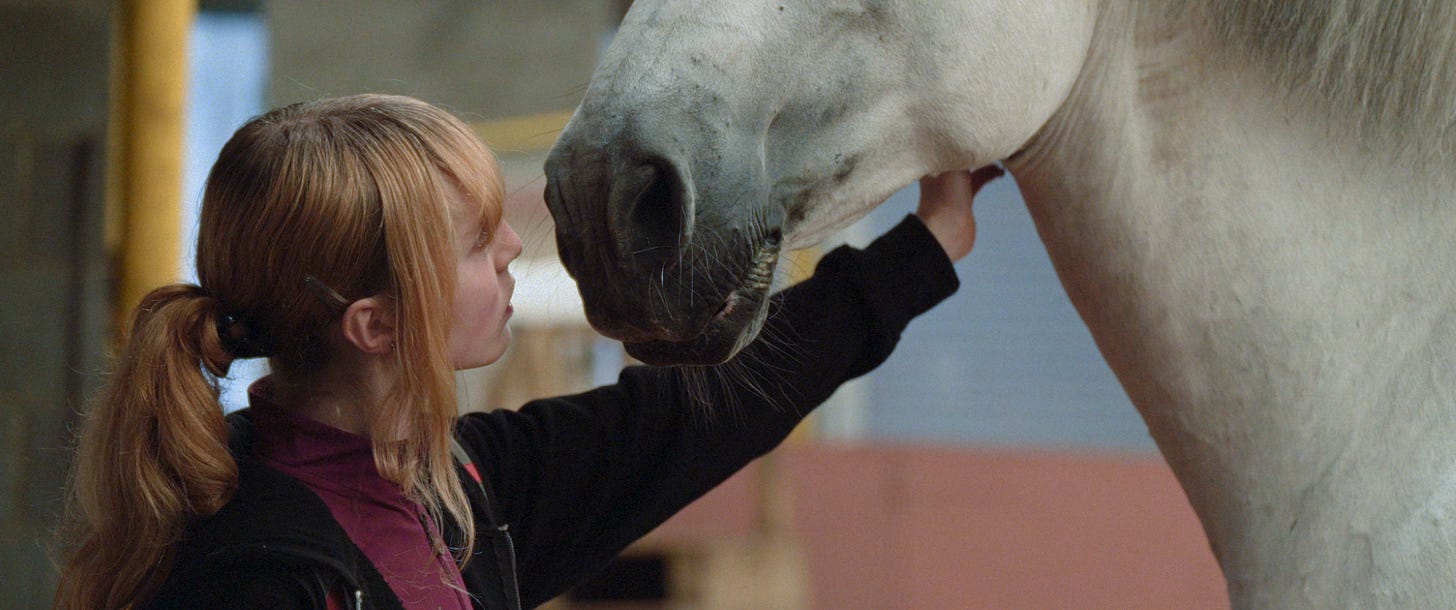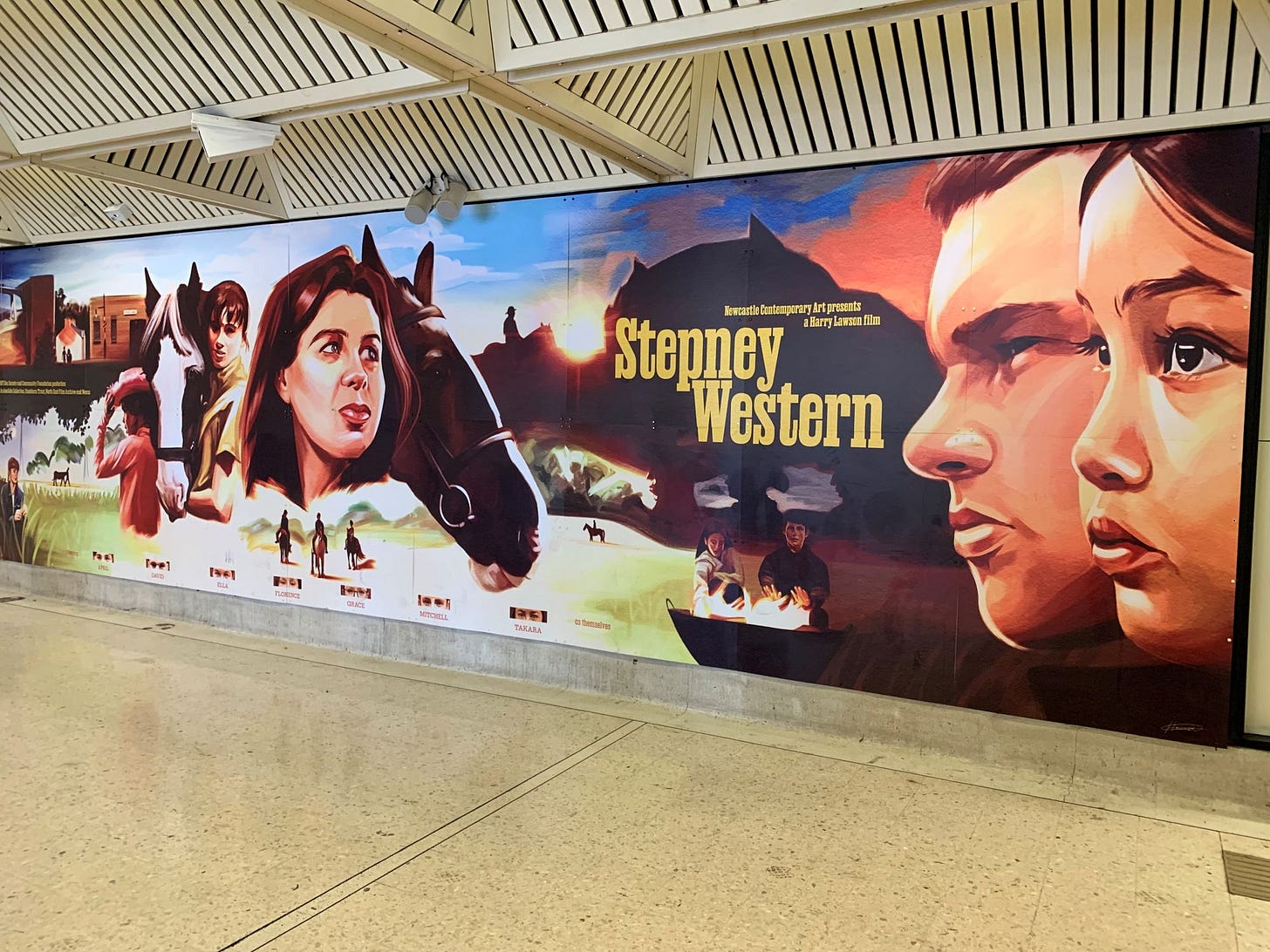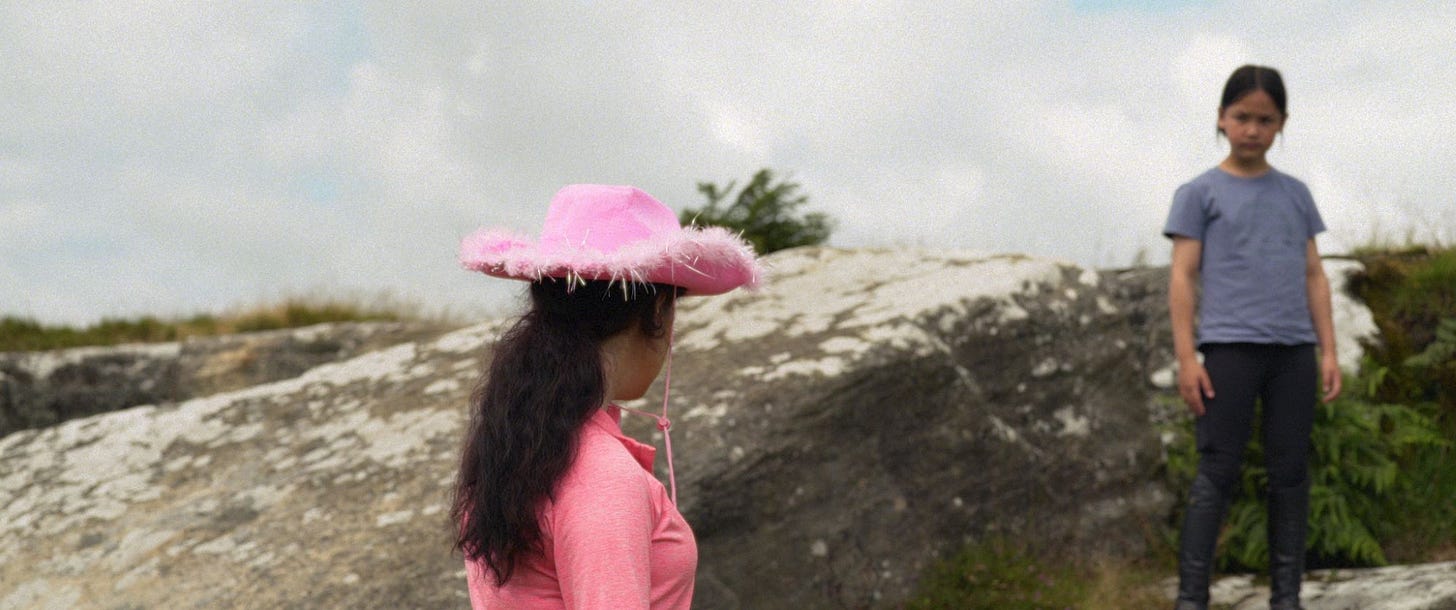Yee-ha! Byker 'Western' hits the big screen
Meet Harry Lawson, the Sergio Leone of Stepney Bank
A notice to visitors at Newcastle Contemporary Art warns that “this exhibition contains hay & horsehair”.
Well, of course it does. This is Stepney Western, a rootin’ tootin’ whip-crack-away celebration of big hats and even bigger skies filmed on the wild rolling plains of…
Well, actually it was filmed in Byker, the Newcastle district (not suburb exactly) whose city streets are worlds away from Arizona or Wyoming.
The stars of this Western pastiche are the young people who frequent Stepney Bank Stables, just up the hill from the Ouseburn, and who ride, care for and evidently bond with the horses and ponies.
They make for an appealing sight as they file down Stepney Bank in this place where nature thrives amid repurposed industrial relics and what some would call creeping gentrification.
Harry Lawson wouldn’t shy away from that. He explains how one of the themes that emerged during his filmmaking was a frontier mentality, integral to every big-screen western but evident also here.
“In Byker you have this cyclical regeneration, first in the 1960s and ’70s with the Byker Wall and now a quieter, more insidious version.
“It’s in all cities but the Ouseburn seems a tension point, I suppose. It used to be Byker and the stables were part of Byker City Farm. Now we have Stepney Bank Stables and the Ouseburn.
“These things aren’t random. Rebrands are a choice and I’m trying to think about how regeneration serves communities. Does it serve the young people at the centre of this story?
“I like nice coffee shops but do they like them? Can they eat at fancy restaurants? These thoughts are the subtext to the film.”
Harry was born in Sunderland in 1994 but went off to university in London at 18 to study English literature. There he hung out with film students and became interested in what they did.
In his third year, his grandma fell ill and the family feared the worst. Unable to travel to Sunderland because of his finals, Harry asked his dad to take some video with his phone.
“He filmed these three episodes of caring for my grandma and after her death about 18 months later, I went and spent time in the care home.
“That became my first film project and actually it’ll be my next project, going back and finishing it. But through all that I realised I wanted to make films so I went and did a master’s in documentary film.”
Though back and living in Newcastle now, Harry was still in London when he had the idea for a contemporary urban western and was in discussions with stables in Brixton. Smiling, he says they had seemed bemused.
“Then I came home to see family and friends and walked past Stepney Bank Stables one day and it was like a eureka moment. Why did I even think of making it in Brixton? Obviously I should be making it in the place I’m from and care about.
“The people at Stepney Bank knew immediately why someone would want to make a film recasting it as the Wild West because they knew, on a way deeper level than I did, what the life experiences of some of the young people were.
“To me it became this challenge of using these stables beneath two bridges, one with trains and one with cars, and with no space and surrounded by an industrial landscape, to make a western.”
He began tentatively, attending the Stepney Bank Christmas party with his girlfriend in 2022, taking no cameras but with the idea of introducing himself.
Among the roles of Stepney Banks Stables, a registered charity, is to provide a practical alternative for young people who don’t thrive in mainstream education.
Setting out to win trust, Harry played it cool at first, taking his cue from the adult trainers and youth workers at Stepney Bank how best to interact with the kids he was to film.
“I had a completely open mind as to what the story would be but very rarely does a good film have 30 protagonists so I knew at some point there must be a narrowing down.
“I thought there’d be self-selection among the kids but there was a lot of enthusiasm to take part. Eventually I decided on seven who I thought might benefit from the project.”
Principal among them was Ella whose face you’ll see on the 1950s-style billboard at Byker Metro station, which extends the reach of Stepney Western beyond the gallery off Newcastle’s Bigg Market.
Her expressive face, registering the gamut of emotions, is a big part of this film and her story, as she tries for a place at Kirkley Hall, provides the narrative thread.
Around it Harry built his film, along with three set-piece scenarios, including one with the youngsters chatting around a campfire.
Punctuating it are moments of epic stillness, such as a horse and rider shot against the sunset, when it’s possible to imagine yourself in a world far removed from Byker.
If horses require sympathetic handling, so did Harry’s protagonists, all aged eight to 14 at the time of filming and with Ella (now 17) the eldest.
“She has a strong will and I love that about her,” says Harry.
“There are days when she’s more or less difficult, or keen to do what people say. If she was in a bad mood I’d say, ‘Let’s just film tomorrow, no problem’.”
When a Stetson was required, Ella found a fluffy pink one on TikTok and Harry went along with her choice. When she failed to turn up for a riding lesson, he agreed to take her place and sat on a horse for the first time in his life.
The film, a charming expression of the bond between horse and human, is an amalgam of Harry’s own footage and archive material he sourced from various places.
This includes snippets from the 1995 Amber Films feature, Eden Valley, which also features a boy at odds with the system, a sort of educational outlaw, and from a 2004 CBBC documentary series, The Stables, shot at the stables on Stepney Bank.
There’s also some extraordinary monochrome footage, dating I’d guess from the 1960s, of a classroom experiment in which children astride vaulting horses ride like cowboys or jockeys flat out in a driving finish.
And the opening credits roll in classic western style with animation reminiscent of Sergio Leone and Clint Eastwood in his prime.
At Newcastle Contemporary Art (which was previously Baltic 39 and, before that, Waygood) Stepney Western is being shown on the big screen with hay bales – hence that warning – to sit on.
In the adjacent gallery, further evidence of Harry’s interest in archives, is a display of photographs drawn from various sources including the Ouseburn Trust and the Amber Film & Photography Collective.
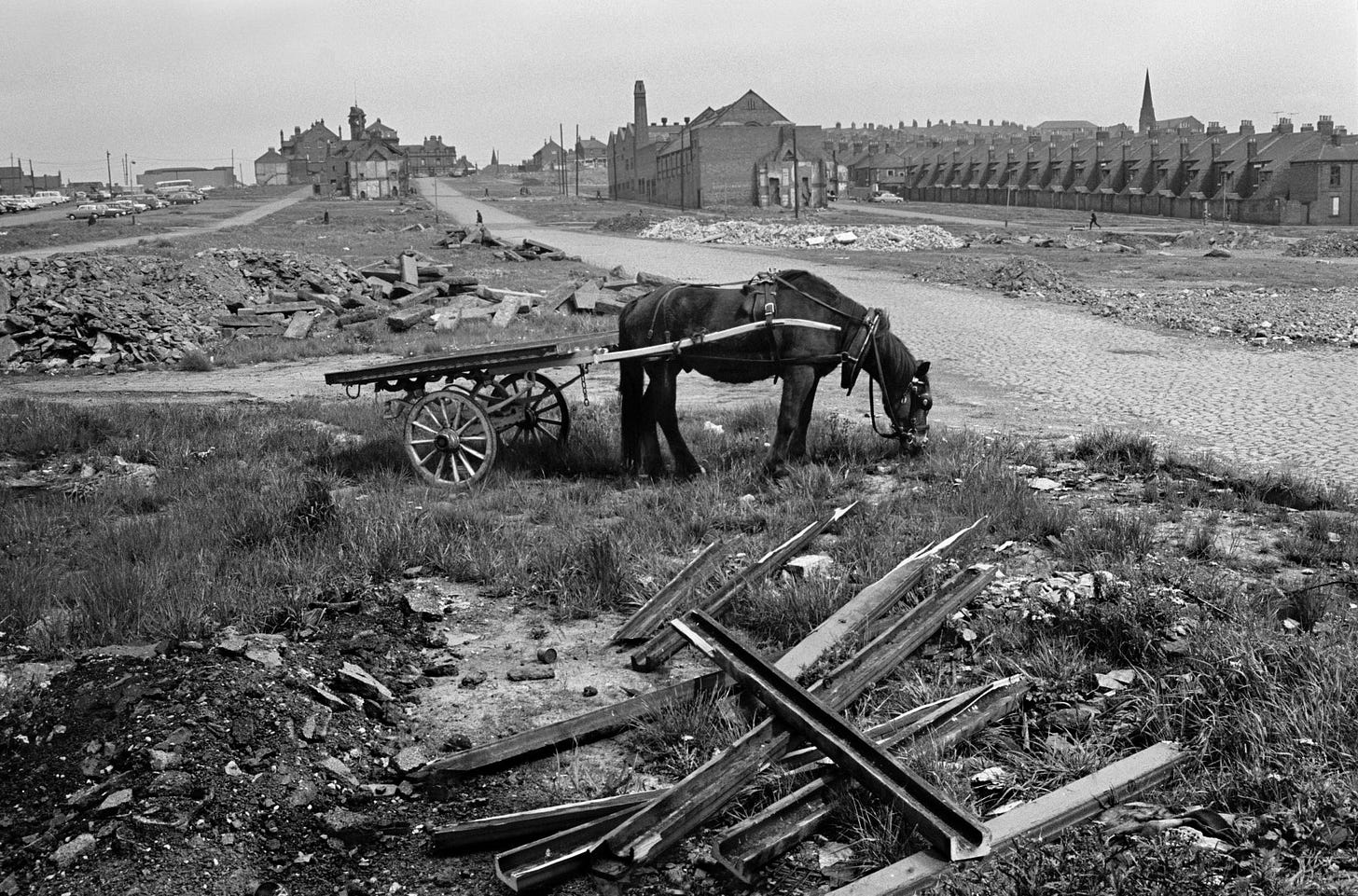
None is captioned, putting the work of Sirkka-Liisa Konttinen, esteemed chronicler of Byker and an Amber founding member, on a par with local community photographer Davey Pearson, who photographed incessantly and whose work was ultimately rescued from a skip.
There are also anonymous snaps taken over the years by Stepney Bank Stables staff and visitors, each capturing a moment precious to someone.
The official premiere of Stepney Western took place recently at Bewick Film & Media Arts Festival, when the young stars took part in a Q&A, but you can see it at Newcastle Contemporary Art, 4th Floor, 39 High Bridge, until Saturday, April 26 (a related programme of events is listed on the website).
And you can even contribute to it.
Going the whole hog, Harry commissioned a series of fabulous western-style posters for visitors to decorate according to style and taste, the best being added to a ground floor display.
There’s a publication, too, a one-off Stepney Western edition of a once popular community paper called the Byker Phoenix.
Supported by Arts Council England, the BFI Doc Society Fund (which distributes lottery money) and the Community Foundation, Stepney Western is well worth braving the horsehair and the hay.



